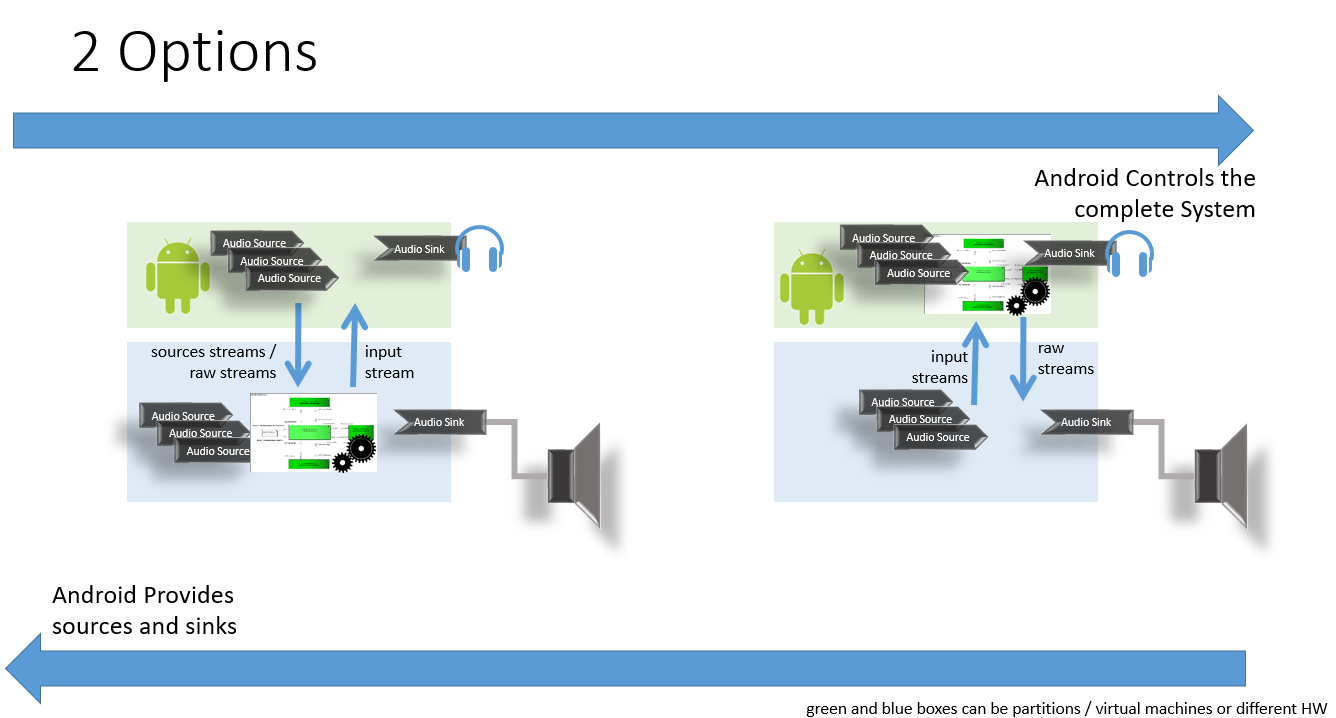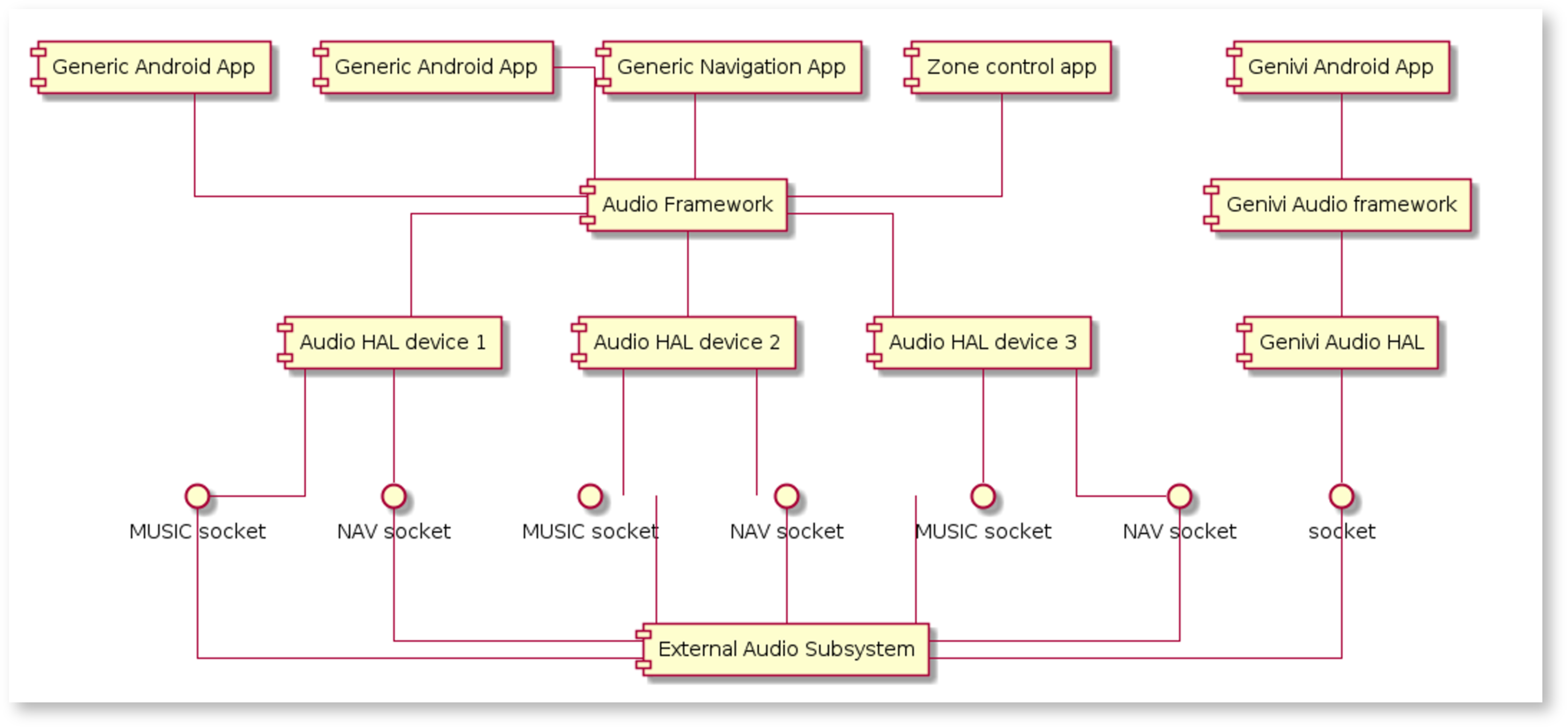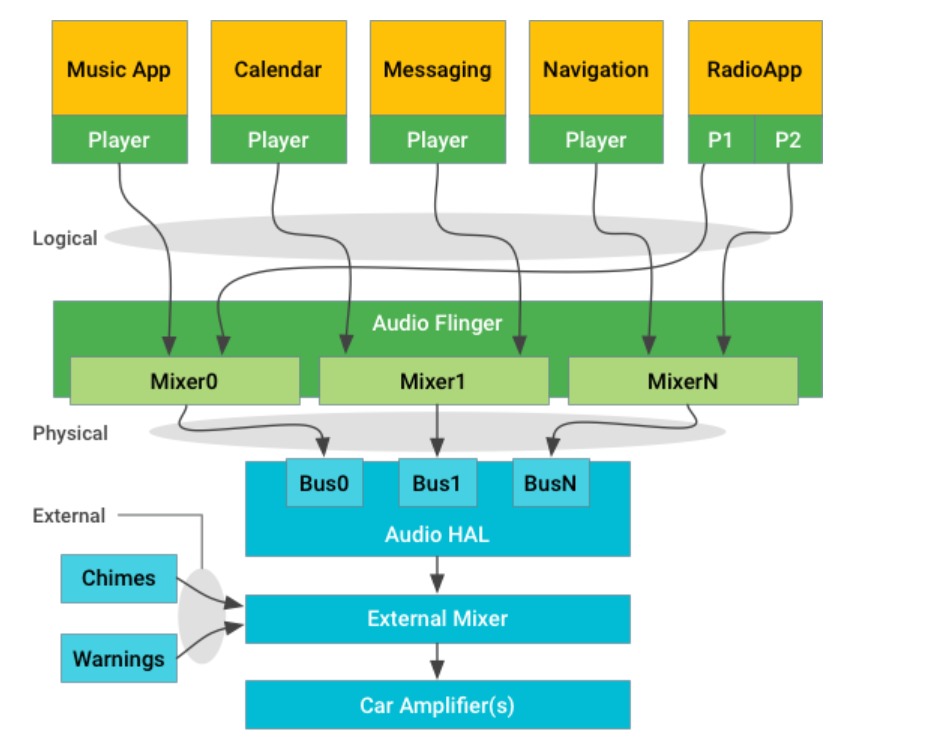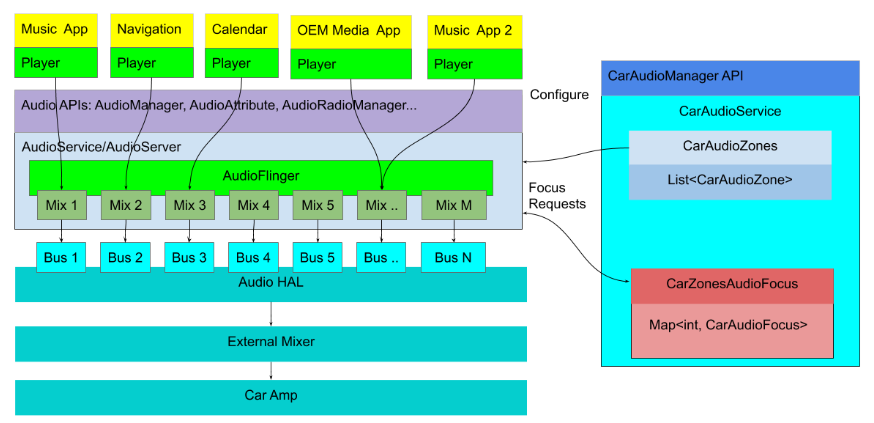| Table of Contents |
|---|
Android and System Level Audio.pptx
...
- Raw streams from Android.
- Can Can we get the raw streams from any source, app, system, etc sent outside of the system without unnecessary preprocessing (see definition of Raw Stream below).
- How is this done?
- Are there limitations? For example, if apps themselves take decision on type, priority, effects, and even volume, then this is not a pure raw stream
- What Raw Stream Metadata (definition below) can be extracted and delivered together with the stream to an outside system.
- Input streams to Android (external sources need to be brought into the Android head unit, if all mixing is done inside Android).
- How is this done?
- Are there limitations on the number of streams?
- Can we bring the required metadata in (or at least associate "hard coded" metadata with the identity of a particular incoming stream. For example we know this one is a prioritized type of stream)
- Any particular support in Android for networked audio? Audio output device?
- Anything to consider about compressed audio / codecs? Support for hardware implementations?
- → Not in AOSP. The connection to hardware accelerators is expected to be implemented by vendor.
Investigation Answers
- Audio devices visible to Android for both internal and external streams are defined in audio_policy_configuration.xml ([1] [2])
- configuration is provided for each audio hardware module/driver (represented by Audio HAL module),
- there should be at least Primary Audio HAL that will provide primary output from Android to the vehicle via AUDIO_DEVICE_OUT_BUS and also that will expose primary input devices like FM TUNER or AUX IN,
- if there is other audio output hardware, it is usually represented by other Audio HAL module (e.g. A2DP Audio HAL, USB Audio HAL, EAVB Audio HAL) - it also comes with corresponding input device, if available (e.g. A2DP Out, A2DP In).
- Raw streams:
- Streams have properties. It seems any of these encodings might be used in the HAL interface: https://source.android.com/devices/audio/data_formats
- ...but not Not all compressions might be supported in a particular platform?
- , it should be expressed in the audio policy configuration which devices support direct output of offloading of compressed data to HW. PCM is considered as default, especially in Android Automotive.
- By default all Android internal streams are going through Framework Mixer. This can be omitted by:
- specific audio policy configuration where some devices are marked to handle direct output - then audio streams might be routed to that device (either by AudioPolicyManager decision or application preference) - ref. example for HDMI multi-channel
- the app when using AAudio API in EXCLUSIVE mode based on MMAP buffers - Audio HAL implementation must support this.
- Android Automotive is expected to be configured in fixed-volume, i.e. all internal streams have fixed volume. Volume control requests are sent directly to Audio HAL by separate API (setAudioPortConfig) - gain controllers are also defined in the audio policy configuration. Ref: Configure volume . NOTE: there's also dedicated API for controlling fader/balance (AudioControl HAL - extension to Audio HAL) but implementation is hardware specific and it's to the vendor how to utilize this.
- What are referred to as metadata match the Android term "attributes", the two main attributes are :
- Usage : (Communication, Alarm, Notification,...) the list is relatively long
- Content type : (Unknown, Movie, Music, Sonification, Speech) and this one is important for post processing configuration
- Streams have properties. It seems any of these encodings might be used in the HAL interface: https://source.android.com/devices/audio/data_formats
- Input streams to Android
- Audio HAL exposes ALSA input device via abstracted audio device with particular type (e.g.. todo... AUDIO_DEVICE_IN_FM_TUNER) and properties defined in the audio policy configuration.
- Can be handled via:
- createAudioPatch/releaseAudioPatch API (no longer recommended since Android10)
- HwAudioSource Player (aimed to replace above-mentioned API)
- AudioRecord/AudioTrack API - kind of loopback, representing external stream via internal stream
- No high-level limitation on the number of streams, limitation might come from particular kernel audio driver implementation or hardware.
- A small presentation about it can be found uploaded here
Analysis of both approaches
...
Proof Of Concept - Getting Raw Streams
side by side with the Android Automotive sounds and streams
(screenshot from the attachment below - Piotr Krawczyk - Tieto Evry)
Android Automotive with Multizone and CarAudioService
https://source.android.com/devices/automotive/audio/multi_zone/overview



